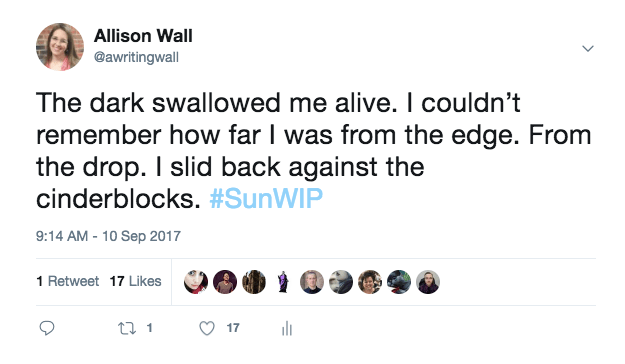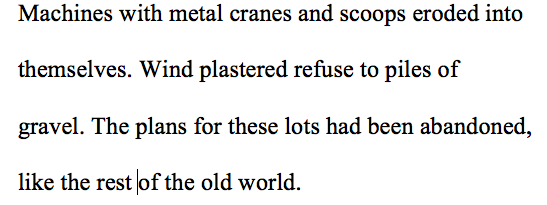Twitter has made me a better writer.
Sounds like clickbait, right? It’s totally not.
When I graduated with my creative writing degree, I lost a lot of involvement in the supportive writing community I had gotten used to. Thankfully, the internet is teeming with brilliant people building virtual writing communities.
In particular, there are amazing creative writers on Twitter. They tweet about their writing lives, what they’re working on, and give encouragement to each other, all in 140 characters or less. They’re pretty easy to find. Search the hashtag #amwriting.
I joined in. One of the best things I discovered were daily writing games. There are many, and they are known by their hashtags: #SunWIP, #MuseMon, #1lineWed, #ThruLineThurs, #Thurds, etc. Each different hashtag/game has a weekly prompt. For example, a recent #MuseMon theme was Love’s Worth Fighting For. The idea is, you post something from your work in progress (WIP) that resonates with the theme, hashtag it #MuseMon, and tweet it into the Twitter world.
Here’s what I tweeted for a recent #SunWIP for the prompt DARK:

Searching these hashtags brings up pages of people playing along. You can like their posts, see how they interpreted the theme, and follow them to see what other things they’re up to. It’s a great way to find writing community online.
It’s also a great way of becoming more aware of your own writing.
When I find something from a WIP that fits the daily theme, it’s usually too long. I have to squeeze it down until it fits the 140-characters limit, minus however many characters the hashtag takes up.
The result: I re-write the piece more concisely, and in the process, I condense my idea into its purest, most powerful form.
Here are two sets of original text compared to the text I eventually tweeted.
EXAMPLE 1


First draft = 31 words. Second draft = 22 words.
Cut = 30%
Final tweet with hashtag = 139 characters.
Sentence 1: I cut out “and scoops” which really didn’t add anything important.
Sentence 2: I substituted the (perhaps) pretentious verb “plastered” for the simpler and more straight forward “blew.”
Sentence 3: I opted to cut the final sentence and make it into a fragment. The WIP is in first person, and my narrator has a tendency to use fragments, so this worked just fine.
Result: I changed the description in my manuscript to match the tweet exactly. The tweet format had helped me hone in on what was most important in the description, and I wasn’t about to bulk it back out with unnecessary details.
EXAMPLE 2


1st draft = 40 words. 2nd draft = 20 words.
Cut = 50%
Final tweet with hashtag = 137 characters.
Sentence 1: I cut out the adjective “haphazard.” I wasn’t thrilled about that, but it felt less important than the later adjective “cavernous.” Two adjectives in one sentence really weigh it down.
Sentence 2-4: I cut them completely. The descriptions were redundant. For example, both “countless” and “armies” are number indicators. I picked the one I liked best. I also didn’t like the repeated sentence fragments. Too rhythmic and simple feeling.
Sentence 5: I took out the repeated “all” and added a color detail about mold. Black mold has such a sinister feel…
Sentence 6: In my WIP, this was actually the start of a new paragraph. I decided I liked the way it fit with the description, and could then work to foreshadow the next paragraph where the narrator explains her negative reaction. I replaced “this place” with “them.” This seemed to make more sense, as the narrator talks about the file cabinets in the previous sentence, not the overall area. (And it’s shorter…)
Result: I discovered points of redundancy and some rhythmic issues. However, in my actual WIP, I ended up keeping some of the description that was cut, namely the file cabinet colors and the emphasis on the size of the place.
So, to sum up…
- Squeezing bits of your work into 140-character tweets can help you realize what words, phrases, or sentences are most important.
- It forces you to examine sentence-level details, like repetition, redundant descriptions, and ineffective word choices.
- Tweeting your work can alert you to patterns in your writing you want to change, like overuse of fragments.
- It can also give you great ideas for revision.
In his book On Writing, Stephen King relays advice he once received: the second draft of anything should be 10% shorter than the first draft. Twitter can be an amazing tool for finding those places you can (and maybe should) cut.
So, by all means, tweet on…
Write on…
♥
Leave a reply to thomas mattheos Cancel reply